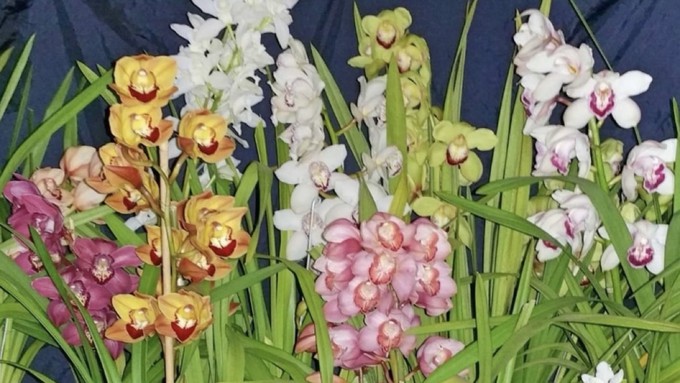
Sacramento Valley Cymbidium Society hosts annual show and sale

See the best of the best local cymbidiums at the annual show and sale of the Sacramento Valley Cymbidium Society this Saturday. Courtesy Sacramento Valley Cymbidium Society
After camellias come cymbidiums – maybe Sacramento’s second favorite March bloomer. These hardy outdoor orchids are just coming into spectacular flower, and they last for weeks.
If you love cymbidiums, you’re in luck. Saturday, March 23, the Sacramento Valley Cymbidium Society is hosting its annual show and sale at Shepard Garden and Arts Center.
The show is a chance to see the best of the best local cymbidiums, displayed by club members. If you want to take some plants home, arrive early: The club will offer more than 75 plants – 50-plus standard-size cymbidiums and 25 miniatures, priced at $30 to $75.
But club members expect them to sell out quickly. That’s what happened when they brought 75 plants to the Shepard Spring Sale this past weekend.
“We had such an amazing response on Saturday (March 16) at the Shepard Sale,” the club posted on Facebook. They sold all but one miniature on this first day of the two-day event.
Fortunately, they’re restocked with new plants for the March 23 sale. These plants were grown by a family-run nursery in San Diego County that specializes in cymbidiums, Casa de las Orquideas.
Club members also will offer advice on how to repot cymbidium orchids and how to care for them. They don’t need much: A spot in the afternoon shade and sufficient irrigation.
Cymbidiums, also known as boat orchids, bloom in massive clusters on 3-foot-tall spikes. With a little protection against frost, these orchids thrive in Sacramento’s mild climate. It’s exposure to temperatures below 55 degrees in winter that prompts all those flowers.
See for yourself on Saturday. Show hours are 10 a.m. to 4 p.m. Admission and parking are free.
The Shepard Center is located at 3330 McKinley Blvd., Sacramento, in McKinley Park.
For more details: www.sgaac.org, https://www.facebook.com/sacramentocymbidiums or email SacCymSoc@yahoo.com.
Comments
0 comments have been posted.Sacramento Digs Gardening to your inbox.
Sites We Like
Garden Checklist for week of July 21
Your garden needs you!
* Keep your vegetable garden watered, mulched and weeded. Water before 8 a.m. to reduce the chance of fungal infection and to conserve moisture.
* Feed vegetable plants bone meal, rock phosphate or other fertilizers high in phosphate to stimulate more blooms and fruiting. (But wait until daily high temperatures drop out of the 100s.)
* Don’t let tomatoes wilt or dry out completely. Give tomatoes a deep watering two to three times a week.
* Harvest vegetables promptly to encourage plants to produce more. Squash especially tends to grow rapidly in hot weather. Keep an eye on zucchini.
* Pinch back chrysanthemums for bushy plants and more flowers in September.
* Remove spent flowers from roses, daylilies and other bloomers as they finish flowering.
* Pinch off blooms from basil so the plant will grow more leaves.
* Cut back lavender after flowering to promote a second bloom.
* It's not too late to add a splash of color. Plant petunias, snapdragons, zinnias and marigolds.
* From seed, plant corn, pumpkins, radishes, winter squash and sunflowers.